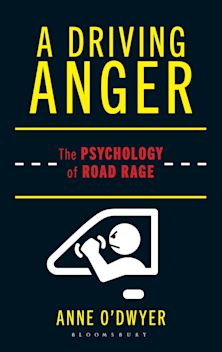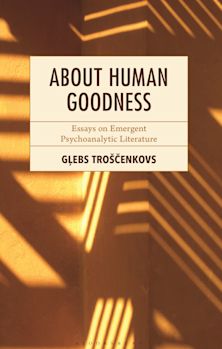- Home
- ACADEMIC
- Psychology
- Social Psychology
- Psychosocial Peacebuilding
You must sign in to add this item to your wishlist. Please sign in or create an account
Description
What if sustainable peace really starts within the human heart and mind?
Psychosocial Peacebuilding places the lived experience of individuals at the center of peace efforts. This timely and engaging book offers a clear, practical, and inspiring guide to understanding and applying psychosocial approaches to peacebuilding theory and practice. It provides both a much-needed conceptual framework to understand and address the broad range of psychosocial factors that shape conflict dynamics and peacebuilding outcomes, and hands-on tools drawn from more than 25 years of global field experience. It looks at how conflict affects psychosocial realities, and how those realities, in turn, influence the trajectory of peace or violence.
Dr. Katrien Hertog explores the what, why, how, and who of psychosocial peacebuilding through case studies, scientific insights, lived experiences, and practical exercises. She introduces an integrated model developed by the International Association for Human Values (IAHV) as a rare example of a conceptual framework for psychosocial peacebuilding that uses evidence-based practices and is implemented with success around the globe in a variety of settings with huge multiplication possibilities. This model exemplifies intra-personal transformation as the cornerstone and foundation for peacebuilding, while at the same time addressing structural change, engaging with behavioral and relational dimensions of peacebuilding, and strengthening underlying human and peace-promoting values.
Whether you're a seasoned peacebuilder, policymaker, student, or newly exploring the psychosocial dimensions of peacebuilding, this guidebook offers a new lens to make sense of complex, interwoven factors and a structured way to understand these issues as integral to the peace process. It makes the case that psychosocial dimensions are not secondary, but foundational to sustainable peace.
Psychosocial Peacebuilding is poised to become a defining reference in an emerging field, offering not only a roadmap for practitioners, but a vision for a more integrated and effective approach to peace.
Table of Contents
List of Tables
List of Exercises
Foreword by Kai Brand-Jacobsen, Peaceworker
Preface
Part One: Conceptualization of Psychosocial Peacebuilding
1. Peace Inside Out – Providing the Missing Link
2. Psychosocial Peacebuilding – What and Why?
3. The integrated Psychosocial Peacebuilding Approach of the International Association for Human Values
Part Two: Application of Psychosocial Peacebuilding
4. IAHV Case Study: Building Peace with War-affected Children in Lebanon and Jordan
5. Integrating Inside
6. Weaving a Peaceful Social Fabric – Interpersonal and Intergroup Peacebuilding
7. Creating Peace-Supporting Systems and Structures and Addressing Global Challenges
8. The Psychosocial Peacebuilding Project Cycle and Organizational Capacity
Conclusion: Way Forward: Building Capacity for Psychosocial Peacebuilding and Transforming Organizations
Afterword: The Peace That Emanates from Consciousness: Gurudev Sri Sri Ravi Shankar's Mission of Integrated Peace
Bibliography
Index
About the Author
Product details

| Published | 19 Feb 2026 |
|---|---|
| Format | Ebook (Epub & Mobi) |
| Edition | 1st |
| Extent | 336 |
| ISBN | 9798216368427 |
| Imprint | Bloomsbury Academic |
| Illustrations | 10 bw |
| Publisher | Bloomsbury Publishing |
About the contributors
Reviews
-
This book powerfully reminds us that sustainable peace is not only built through institutions and policies, but through inner transformation and human connection. I have had the privilege to witness the impact of Dr. Hertog's transformational approach on the ground. Dr. Hertog's work is a vital contribution to reimagining peacebuilding from the inside out-deeply relevant for leaders, practitioners, and citizens committed to a more just, inclusive, and compassionate world.
Sanjay Pradhan, President, World Forum for Ethics in Business, Former Vice-President, World Bank
-
Dr. Katrien Hertog's Psychosocial Peacebuilding is a landmark achievement-an evidence-based, field-tested guide that redefines how we understand and engage the human foundations of peace. The culmination of decades of learning, practice, and research, it transforms psychosocial dimensions from overlooked add-ons into essential pillars of sustainable peacebuilding. With scientific rigor, strategic insight and deep humanity, this book is not only timely and visionary, it is a key reference for anyone serious about making peace real, resilient, and lasting.
Kai Brand-Jacobsen, Peaceworker
-
Katrien Hertog's book offers valuable insights into micro-level peacebuilding, highlighting for example the transformative power of interventions such as the Art of Living techniques, which are designed to change mindsets, attitudes, and behaviours among individuals and communities affected by conflict. Social scientists, neuroscientists, and psychiatrists have developed numerous models, concepts, and frameworks to describe these processes, as comprehensively discussed in the book. In many cases, initiating peacebuilding is only feasible through micro-level interventions. Once a solid foundation is established, these efforts can expand to address broader, macro-level concerns.
Daniel Bar-Tal, Social Psychologist, Tel Aviv University
-
At last, we have a comprehensive map for a terrain long overlooked. This book translates the deep, often invisible work of psychosocial transformation into a clear, actionable framework. It will stand alongside the great foundational texts of peace studies for decades to come.
Emma Seppälä, Yale Faculty and bestselling author
-
This valuable book brings to center stage the human dimensions of peacebuilding that have often been backgrounded or forgotten yet are crucial. Humane and practical, it inspires a holistic approach that is highly useful at levels from the family to societal and international levels.
Mike Wessels, Columbia University, co-author of IASC Guidance on MHPSS and Peacebuilding
-
If peacebuilding were a bridge, the psychosocial dimension would be the steel holding it together. Dr. Hertog's work shows us exactly how to reinforce that structure-combining rigorous research, vivid examples, and practical tools that can be applied in any context.
Abdel Fattah Al Habchi, Youth Participant IAHV Peace Project, Lebanon



































